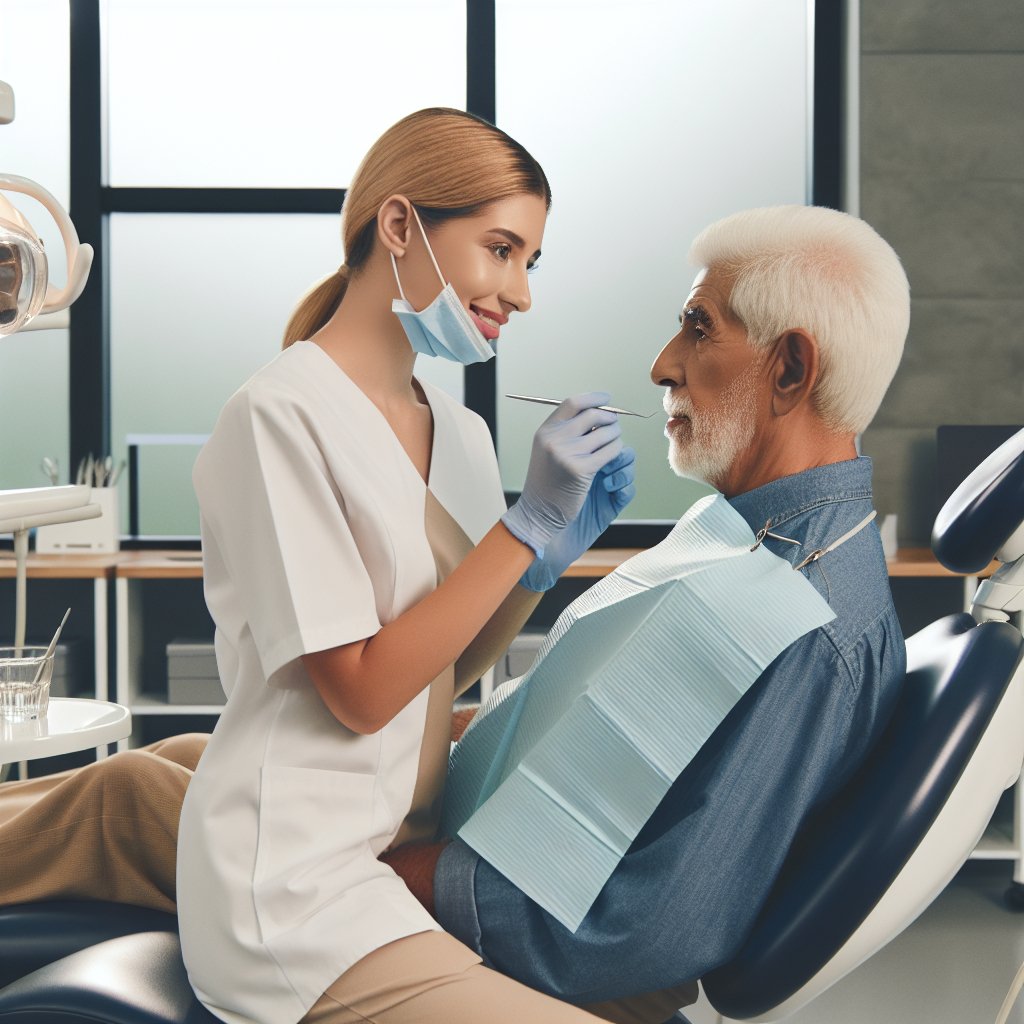The aging population presents unique challenges and opportunities for dental professionals. As people live longer, maintaining oral health becomes increasingly important, not only for overall well-being but also for quality of life. Dentists are adapting their practices to meet the specific needs of older patients, focusing on preventive care, advanced treatment options, and a more compassionate approach to dental health. This article explores how dentists are addressing these needs and the innovative strategies they are implementing to ensure that aging populations receive the best possible care.
Understanding the Oral Health Challenges of Aging Populations
As individuals age, they often face a variety of oral health challenges that can significantly impact their quality of life. These challenges include:
- Increased Risk of Dental Diseases: Older adults are more susceptible to dental caries, periodontal disease, and other oral health issues due to factors such as reduced saliva production, medication side effects, and changes in diet.
- Tooth Loss: Tooth loss is a common issue among the elderly, often resulting from untreated dental diseases. This can lead to difficulties in eating, speaking, and socializing.
- Oral Cancer: The risk of oral cancer increases with age, making regular dental check-ups essential for early detection and treatment.
- Chronic Conditions: Many older adults have chronic health conditions, such as diabetes and heart disease, which can complicate dental treatment and require a more integrated approach to care.
Understanding these challenges is crucial for dentists as they develop strategies to provide effective care for their aging patients. By recognizing the specific needs of older adults, dental professionals can tailor their services to improve outcomes and enhance the overall patient experience.
Preventive Care and Education
Preventive care is a cornerstone of modern dentistry, and it becomes even more critical when addressing the needs of aging populations. Dentists are focusing on education and preventive measures to help older adults maintain their oral health. Key strategies include:
Regular Check-ups and Screenings
Regular dental visits are essential for early detection of potential issues. Dentists are encouraging older patients to schedule check-ups at least twice a year. During these visits, dental professionals can:
- Conduct thorough examinations to identify signs of decay, gum disease, or oral cancer.
- Provide professional cleanings to remove plaque and tartar buildup.
- Offer personalized advice on oral hygiene practices tailored to the needs of older adults.
Patient Education
Education plays a vital role in preventive care. Dentists are taking the time to educate their older patients about:
- The importance of maintaining good oral hygiene practices, such as brushing and flossing.
- How certain medications can affect oral health and the importance of discussing these with their healthcare providers.
- Dietary choices that promote oral health, including foods rich in calcium and vitamins.
By empowering patients with knowledge, dentists can help them take an active role in their oral health, leading to better outcomes and a higher quality of life.
Advanced Treatment Options
As dental technology continues to evolve, dentists are able to offer advanced treatment options that cater specifically to the needs of aging populations. These options include:
Restorative Dentistry
Restorative dentistry plays a crucial role in addressing tooth loss and decay among older adults. Dentists are increasingly utilizing:
- Dental Implants: These provide a permanent solution for missing teeth, improving function and aesthetics.
- Bridges and Dentures: For patients who may not be candidates for implants, bridges and dentures offer effective alternatives.
- Fillings and Crowns: Advanced materials and techniques allow for more durable and aesthetically pleasing restorations.
Periodontal Treatment
Periodontal disease is prevalent among older adults, and effective treatment is essential for maintaining oral health. Dentists are employing:
- Scaling and Root Planing: This deep cleaning procedure helps remove plaque and tartar from below the gum line.
- Laser Therapy: Minimally invasive laser treatments can effectively target periodontal disease with less discomfort and faster recovery times.
Oral Cancer Screening
Given the increased risk of oral cancer in older adults, dentists are prioritizing screenings during routine check-ups. Early detection is key to successful treatment, and dentists are using:
- Visual and Physical Examinations: Regular assessments can help identify suspicious lesions or abnormalities.
- Advanced Imaging Techniques: Technologies such as VELscope can aid in the early detection of oral cancer.
Compassionate Care and Accessibility
Providing compassionate care is essential when working with aging populations. Dentists are adopting a more empathetic approach to ensure that older patients feel comfortable and supported throughout their treatment. This includes:
Creating a Welcoming Environment
Dental offices are making efforts to create a welcoming and accessible environment for older patients. This can involve:
- Ensuring that the office is wheelchair accessible and equipped with comfortable seating.
- Training staff to be patient and understanding, particularly when addressing the concerns of elderly patients.
- Offering flexible appointment times to accommodate the schedules of older adults and their caregivers.
Involving Caregivers
Many older adults rely on caregivers for support, and involving these individuals in the dental care process can enhance communication and improve outcomes. Dentists are encouraged to:
- Provide caregivers with information about the patient’s oral health needs and treatment plans.
- Encourage caregivers to attend appointments to help facilitate discussions and ensure that the patient’s needs are met.
Conclusion
As the population ages, dentists are rising to the challenge of meeting the unique oral health needs of older adults. Through a combination of preventive care, advanced treatment options, and compassionate approaches, dental professionals are ensuring that aging populations receive the care they deserve. By focusing on education, accessibility, and innovative treatments, dentists are not only improving oral health outcomes but also enhancing the overall quality of life for their patients. The future of dentistry lies in its ability to adapt and respond to the changing demographics of society, and the commitment to serving aging populations is a testament to the profession’s dedication to health and well-being.




